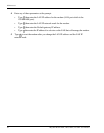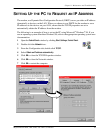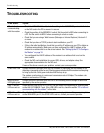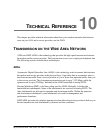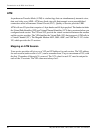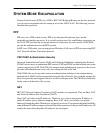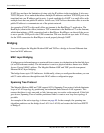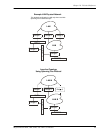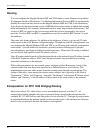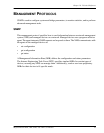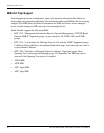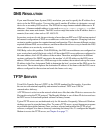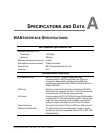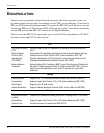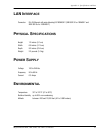
System Mode Encapsulation
90 Megabit Modem 400F, 500L, 600F, and 700F User Manual
Routing
You can configure the Megabit Modem 400F and 700F router to route Ethernet-encapsulated
IP datagrams based on IP addresses. Use Routing Information Protocol (RIP) to automatically
identify the route from the session on the Megabit Modem 400F and 700F to the destination.
You can specify the direction and version of RIP that allows other routers to update their routing
tables automatically (for example, information on how many hops between destinations). The
version of RIP you select for the session must match the version supported by the service
provider. Versions RIP1 and RIP-1 compatible are used for broadcast. RIP Version 2 is used
for multicast.
The router also learns addresses. In addition to the addresses it learns, you can add 32 static
route entries on the LAN Brouter configuration page. Through the static IP routing feature, you
can configure the Megabit Modem 400F and 700F as an IP router with statically programmed
route entries. You can enable this function to provide broadcast filtering and to prevent
eavesdropping by specifying multiple destination gateways. When static IP routing is enabled,
you can access only specific remote IP subnets or hosts.
Since IP routers make forward or filter decisions based on the network-layer IP address instead
of the MAC hardware address, MAC-level broadcast frames are prevented from reaching
unwanted destinations in the network.
When setting parameters for an external router, configure a Static Route entry in any of the
external routers that may have been specified as a Default Router or as a Gateway. This
implementation prevents other parties from discovering routes through eavesdropping. The
format of this entry varies among the various router vendors, but is typically in the form of
"Destination," "Mask," and "Gateway," where the "Destination" is the remote IP Subnet or host
address, and "Gateway" is the IP address of the modem on the same subnet as the external
router.
Encapsulation for RFC 1483 Bridging/Routing
Most users select LLC, which allows you to run multiple protocols over the VC. An
encapsulation header identifies the types of protocol being carried in the transmission (for
example, IP). VC-MUX allows only one protocol to run over the VC. The type of protocol must
be negotiated between the modem and the service provider prior to the transmission. Because
there is only one protocol allowed, the header is not required.



